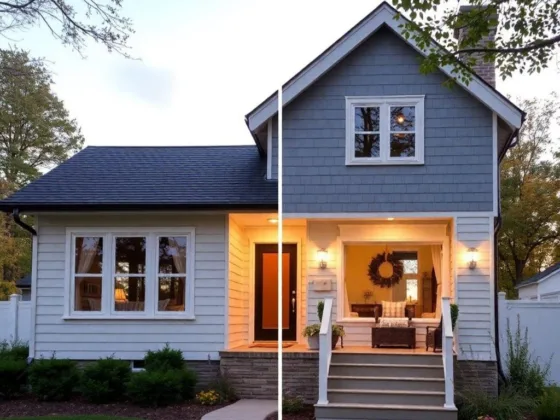If you’ve recently considered furnace repair, furnace maintenance, or even a full furnace installation, you may have noticed a shift in the options available. Governments worldwide are rolling out stricter energy efficiency regulations, transforming how homeowners heat their homes.
These changes don’t just affect manufacturers—they directly impact your options for heating systems, as well as the costs and benefits of upgrading your furnace.
The Regulatory Shift: Why It’s Happening
In the United States, the Department of Energy (DOE) now mandates that non-weatherized gas furnaces and those in mobile homes must achieve a minimum Annual Fuel Utilization Efficiency (AFUE) of 95% by 2028.
This standard ensures furnaces use fuel more effectively, wasting less energy during operation. The move aligns with global efforts to lower emissions and promote sustainability. For homeowners, this means older, less efficient furnaces will no longer be available, potentially requiring upgrades or replacements.
The EU is also pushing for similar standards, emphasizing eco-design regulations. These rules restrict the availability of systems with lower energy efficiency ratings, encouraging a market shift toward cleaner technology.
What This Means for Furnace Design
Modern furnaces are being redesigned to meet these regulations through advanced features:
- Condensing Furnaces: These systems reuse heat from exhaust gases, achieving AFUE ratings above 95%.
- Variable-Speed Motors: They adjust output based on your home’s heating needs, using energy more efficiently.
- Smart Thermostat Integration: These allow homeowners to control and monitor heating remotely for optimized energy use.
These features reduce energy bills while maintaining a more consistent indoor temperature. However, they also require precise installation and may demand infrastructure upgrades like venting systems to meet higher standards.
The Cost Factor: Upfront vs. Long-Term Savings
Upgrading to a compliant furnace can initially be costly. A high-efficiency condensing furnace can cost $1,000–$2,000 more than a standard model. However, the energy savings over its lifespan can recoup this expense.
The DOE estimates these systems will collectively save homeowners $1.5 billion annually. Federal and local rebate programs can further offset costs.
For example, under the Inflation Reduction Act of 2022, homeowners may qualify for significant rebates when upgrading their heating systems. Additionally, energy audits provided by utility companies can identify areas for further savings, maximizing the return on your investment.
Challenges for Homeowners
While the benefits are clear, the transition isn’t without challenges:
- Higher Initial Costs: While efficient furnaces save money over time, the upfront price can be a barrier.
- Installation Complexities: Retrofitting an older home for a high-efficiency system may require changes to ductwork and venting.
- Knowledge Gap: Many homeowners aren’t aware of the new standards or their implications.
Working with a qualified heating service provider can alleviate these challenges, ensuring proper installation and compliance without unnecessary expenses.
How Heating Service Providers Can Help
Heating service providers play a critical role in bridging the gap between homeowners and evolving regulations. Here’s how:
- Custom Assessments: Providers evaluate your current system and recommend upgrades tailored to your home and budget.
- Navigating Rebates: They can guide you through federal, state, and local incentives to minimize costs.
- Quality Installation: Proper installation ensures your system performs at peak efficiency, avoiding common pitfalls like improper venting.
- Education: Providers demystify technical jargon, explaining the benefits of upgrades in practical terms.
Homeowners can take advantage of these changes without feeling overwhelmed by partnering with professionals.
What You Should Do Now
- Schedule an Energy Audit: An audit identifies inefficiencies and determines whether your current furnace meets new standards.
- Research Furnace Options: Look for systems with AFUE ratings above 95%, ENERGY STAR certifications, and features like smart thermostats.
- Take Advantage of Incentives: Explore rebate programs, financing options, and tax credits to offset the cost of upgrading.
- Plan Ahead: Don’t wait until your furnace fails. Proactively upgrading ensures you can choose the best system without pressure.
A Look Ahead: The Future of Home Heating
The shift to higher efficiency doesn’t stop with furnaces. Emerging technologies like geothermal systems, solar-assisted heating, and hydrogen fuel integration are likely to gain prominence.
These innovations promise to lower energy costs and carbon footprints further, paving the way for sustainable living. For homeowners, embracing these changes isn’t just about compliance—it’s an opportunity to save money, improve comfort, and contribute to a greener future.
By understanding the regulations and partnering with knowledgeable service providers, you can turn this regulatory shift into a smart investment for your home.
FAQ:
Furnace energy efficiency regulations are being implemented to ensure that heating systems use fuel more effectively, reducing energy waste and emissions. Governments worldwide, including the U.S. and EU, are promoting these standards to encourage the adoption of cleaner technology and to support sustainability efforts.
By 2028, the Department of Energy mandates that non-weatherized gas furnaces and those in mobile homes must achieve a minimum AFUE of 95%. This standard ensures that furnaces operate more efficiently, resulting in lower energy consumption and costs for homeowners.
Modern high-efficiency furnaces may include features like condensing technology, which reuses heat from exhaust gases; variable-speed motors that adjust output based on heating needs; and smart thermostat integration for remote control and monitoring, all of which enhance energy efficiency and comfort.
While the initial cost of upgrading to a high-efficiency furnace can be higher (ranging from $1,000 to $2,000 more than standard models), homeowners can save significantly on energy bills over time. Additionally, federal and local rebate programs can further offset these upfront costs.
Heating service providers offer custom assessments of existing systems, guide homeowners through available rebates and incentives, ensure quality installation for optimal efficiency, and educate clients about the benefits of upgrading, making the transition to compliant systems smoother and more manageable.










